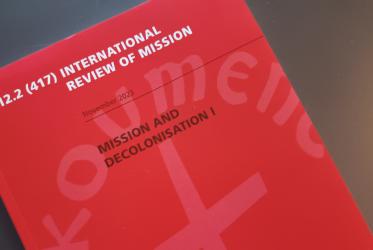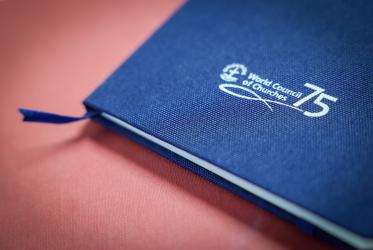Journals have played a significant role in the history of the ecumenical movement, according to an event held during the European Academy of Religion in Bologna, Italy.
Under the title “Speaking, Discussing, Doing Ecumenism. Life and History of the Ecumenical Journals,” researchers, academics and editors discussed the history of a wide range of journals focusing on issues related to Christian unity.
They noted during the 8 March study day that while some journals were linked to institutions such as the World Council of Churches (WCC), others grew out of the work of religious communities that sought to promote interconfessional understanding.
Presenting the history of the WCC’s quarterly The Ecumenical Review, editor Stephen Brown described how its first issue was published immediately before the WCC’s founding assembly in 1948 and with the WCC’s first general secretary, Willem A. Visser ’t Hooft, as editor.
In his first editorial, Brown said, Visser ‘t Hooft wrote that the journal should reflect a “common struggle for that truth which transcends all churches … We therefore ask our readers not merely to tolerate but to welcome uncompromising frankness of speech, even if at first reading it may hurt.”
Brown noted how the history of the journal is closely linked to that of the WCC, going back to the mid-1930s and the efforts to form a World Council of Churches by bringing together the “Faith and Order” and “Life and Work” movements. In this process, the publication of an “ecumenical journal” was seen as one of the key tasks for the future WCC.
In her contribution, former WCC staff member Dagmar Heller – now with the Institute for Ecumenical Research in Bensheim, Germany - recounted how Ökumenische Rundschau, which means “Ecumenical Review” in German, started publication in Germany in 1952 with close links to the WCC and as a forum for ecumenical texts and documentation.
Ephrem Ishac, originally from Syria, presented the history of Proche-Orient Chrétien (“Christian Middle East”), founded in 1951 as an ecumenical journal, and the challenges it faced amid the conflicts in the Middle East.
Several ecumenical journals presented at the meeting owed their origins to the encounter with Russian Orthodox theologians who took refuge in Western Europe after the Russian Revolution and the First World War.
In Britain, such encounters led to production of Sobornost from 1935, originally published from 1927 as the Journal of the Fellowship of St Alban and St Sergius, which promoted dialogue between Orthodox and Anglicans.
In France, the journal Istina (“truth” in Russian) was launched in 1954 by the Centre “Istina,” a Dominican study centre that played an important role before the Second World War in promoting knowledge and understanding of the church in Russia.
While including a section on Russian Christianity, the journal Istina adopted a wider ecumenical perspective, and in the 1950s, at the suggestion of Visser ’t Hooft produced French versions of WCC documents and reports.
Other journals presented at the event sought to respond to specific ecumenical challenges, such as the journal Foyers Mixtes (“Interconfessional Familes”), which was published to support couples and families where the partners came from different confessional traditions.





